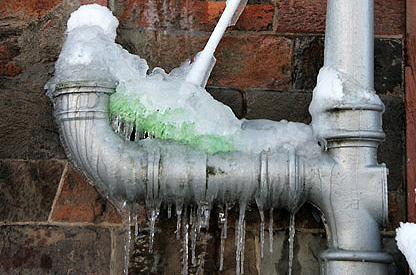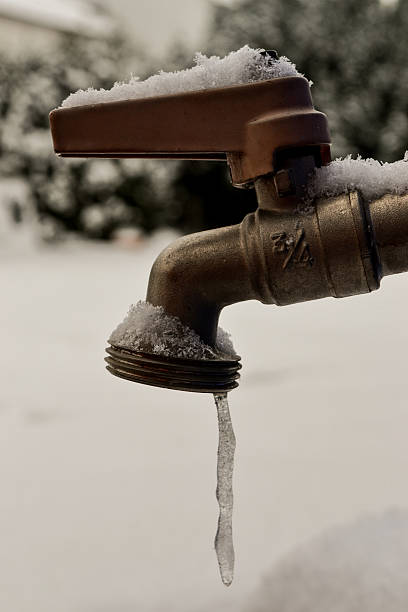Essential Tips to Prevent Frozen Plumbing in Winter
Essential Tips to Prevent Frozen Plumbing in Winter
Blog Article
They are making a number of good pointers on the subject of How to prepare your home plumbing for winter weather as a whole in the article directly below.

Winter can damage your pipes, specifically by freezing pipelines. Here's how to stop it from happening and what to do if it does.
Introduction
As temperatures drop, the risk of icy pipes rises, possibly leading to costly fixings and water damages. Comprehending how to stop frozen pipes is vital for property owners in cool environments.
Recognizing Icy Pipelines
What triggers pipes to ice up?
Pipelines freeze when exposed to temperatures listed below 32 ° F (0 ° C) for expanded periods. As water inside the pipelines freezes, it increases, taxing the pipe wall surfaces and possibly creating them to break.
Risks and damages
Frozen pipelines can lead to water supply disruptions, residential property damages, and expensive fixings. Burst pipelines can flood homes and create comprehensive structural damage.
Signs of Frozen Pipeline
Determining icy pipes early can prevent them from rupturing.
Just how to identify frozen pipes
Seek lowered water flow from taps, unusual smells or sounds from pipelines, and noticeable frost on revealed pipes.
Avoidance Tips
Protecting susceptible pipelines
Cover pipes in insulation sleeves or make use of warm tape to safeguard them from freezing temperature levels. Concentrate on pipelines in unheated or external areas of the home.
Home heating techniques
Keep interior rooms effectively warmed, especially areas with plumbing. Open cupboard doors to enable warm air to distribute around pipes under sinks.
Securing Exterior Pipes
Yard pipes and outside taps
Detach and drain garden hoses before winter. Mount frost-proof faucets or cover exterior faucets with insulated caps.
What to Do If Your Pipes Freeze
Immediate activities to take
If you presume frozen pipes, maintain faucets open to soothe pressure as the ice thaws. Make use of a hairdryer or towels taken in warm water to thaw pipelines slowly.
Long-Term Solutions
Structural modifications
Take into consideration rerouting pipelines away from outside walls or unheated areas. Include added insulation to attic rooms, basements, and crawl spaces.
Updating insulation
Invest in top notch insulation for pipes, attics, and wall surfaces. Appropriate insulation helps keep constant temperatures and decreases the danger of frozen pipelines.
Verdict
Protecting against icy pipes requires positive actions and quick reactions. By recognizing the reasons, indications, and preventive measures, house owners can shield their pipes throughout winter.
6 Proven Ways to Prevent Frozen Pipes and Protect Your Home
Disconnect and Drain Garden Hoses
Before winter arrives, start by disconnecting your garden hoses and draining any remaining water. Close the shut-off valves that supply outdoor hose bibs and leave the outdoor faucet open to allow any residual water to drain. For extra protection, consider using faucet covers throughout the colder months. It’s also important to drain water from any sprinkler supply lines following the manufacturer’s directions.
Insulate Exposed Pipes
Insulating your pipes is an effective way to prevent freezing. Pipe insulation is readily available at home improvement stores and is relatively inexpensive. Pay close attention to pipes in unheated areas such as the attic, basement, crawl spaces, or garage. Apply foam insulation generously to create a buffer against the cold. You can also wrap your pipes in heat tape or thermostat-controlled heat cables for added warmth.
Seal Air Leaks
Inspect your home for any cracks or openings that could let in cold air. Seal any holes around the piping in interior or exterior walls, as well as the sill plates where your home rests on its foundation. Additionally, make sure to keep your garage door closed unless you’re entering or exiting. Leaving it open creates a significant air leak that can lead to frozen pipes.
Allow Warm Air Circulation
During cold snaps, it’s essential to allow warm air to circulate evenly throughout your home. Leave interior doors ajar to promote better airflow. Open kitchen and bathroom cabinets to help distribute heat consistently around the rooms. If you have small children or pets, be sure to remove any household chemicals or potentially harmful cleaners from open cabinets for safety.
Let Faucets Drip
A small trickle of water can make a big difference in preventing ice formation inside your pipes. When temperatures drop significantly, start a drip of water from all faucets served by exposed pipes. This continuous flow helps prevent the water from freezing. Additionally, running a few faucets slightly can relieve pressure inside the pipes, reducing the chances of a rupture if the water inside does freeze.
https://choateshvac.com/6-proven-ways-to-prevent-frozen-pipes-and-protect-your-home/

Hopefully you enjoyed reading our topic on Prevent Frozen Pipes . Thanks for taking the time to read our piece of content. Do you know about another individual who is looking into Winter Plumbing Precautions: Preventing Frozen Pipes? Do not hesitate to promote it. Bless you for your time. Please check up our blog back soon.
Start Now Report this page